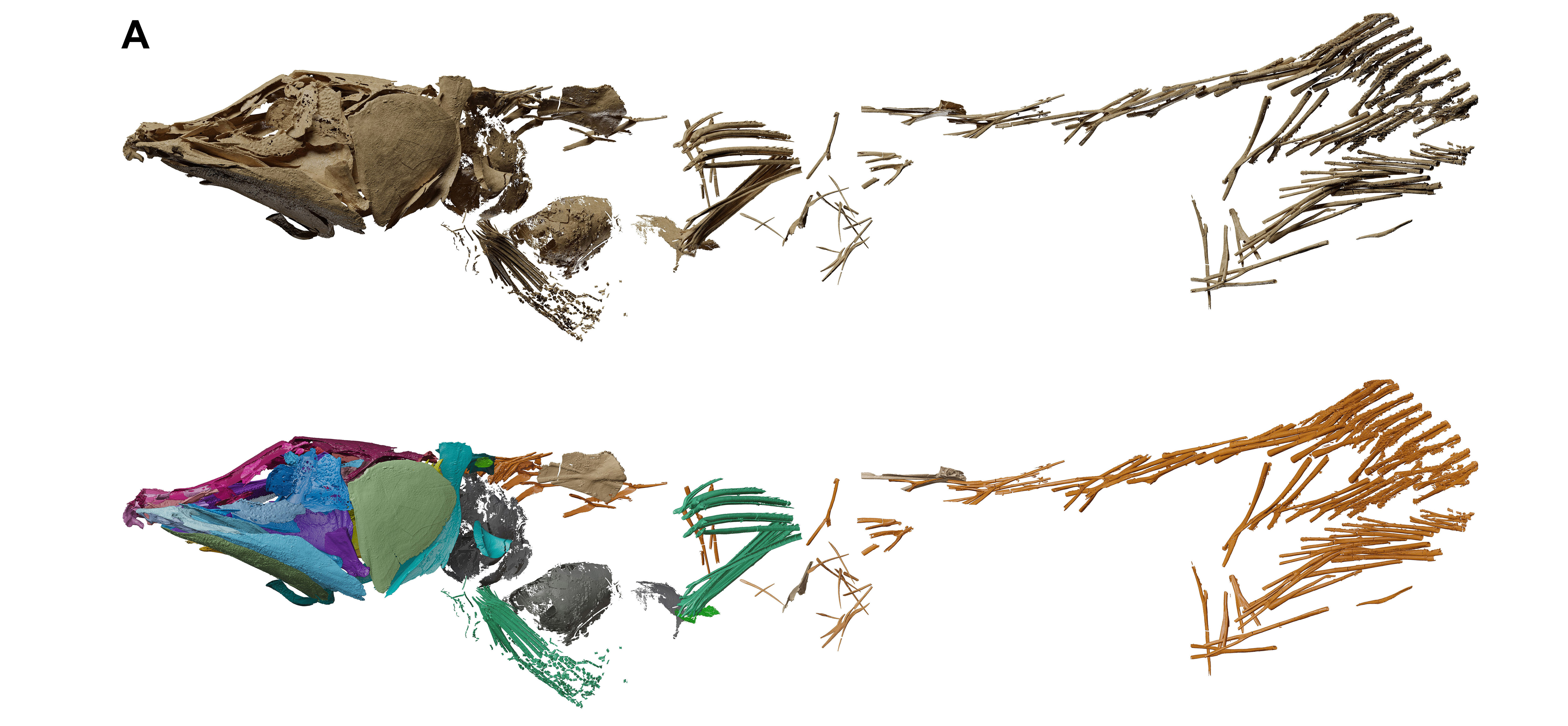A new extinct species of coelacanth discovered thanks to Synchrotron
Using a particle accelerator, a scientific team has identified a new species of these fish, considered to be ‘living fossils’.

Coelacanths are strange fish that are currently only known from two species found along the East African coast and in Indonesia. A team from the Natural History Museum (MHNG) and the University of Geneva (UNIGE) has succeeded in identifying an additional species, with a level of detail never before achieved. This discovery was made possible by the use of the European Synchrotron Radiation Facility (ESRF) in Grenoble, a particle accelerator for analysing matter. Find out more about this work in the journal PlosOne.
Fossilization is a process that allows the preservation of plants and animals in rocks for hundreds of millions of years. During this period, geological upheavals often deteriorate fossils and paleontologists put great deal of effort and imagination into reconstructing organisms as they were when they were alive.
A team of paleontologists from the MHNG and UNIGE, in collaboration with researchers from the Senckenberg Research Institute and Natural History Museum in Frankfurt am Main (Germany) and the European Synchrotron Radiation Facility (ESRF-France), have just published a paper that demonstrates that some 240-million-year-old coelacanth fossils have preserved details of their skeleton so fine that they had never been observed before the use of the synchrotron.
 Luigi Manuelli (UNIGE) et Lionel Cavin (MHNG) at the Grenoble synchrotron (ESRF). © K.Dollman
Luigi Manuelli (UNIGE) et Lionel Cavin (MHNG) at the Grenoble synchrotron (ESRF). © K.Dollman
Coelacanths are fish of which there are only two current species and which, with a few exceptions, evolved slowly over more than 400 million years. The fossils studied by the international team were discovered in clay nodules from the Middle Triassic period in Lorraine (France), near Saverne. The specimens, about fifteen centimetres long, are preserved in three dimensions.
Some specimens were analysed at the ESRF in Grenoble. This facility is a particle accelerator that rotates in a 320-meter diameter ring and produces X-rays called "synchrotron light." This light is used to study matter and, in particular, makes it possible to create images of fossils preserved in rock. After hundreds of hours of work consisting of virtually individualizing the bones of the skeleton by computer, we obtain virtual 3D models of the fossils that can be easily studied.
 A coelacanth fossil partially freed from the rock in which it was found. © P. Wagneur - MHNG
A coelacanth fossil partially freed from the rock in which it was found. © P. Wagneur - MHNG
Luigi Manuelli, then a doctoral student at the UNIGE Department of Genetics & Evolution and Natural History Museum of Geneva in the team of paleontologist Lionel Cavin, carried out this work as part of a project supported by the Swiss National Science Foundation. The results obtained make it possible to reconstruct the skeleton of these fish with a level of detail never before obtained for this type of fossil. This is a new species named Graulia branchiodonta, named after Graoully, a mythical dragon from Lorraine folklore and in reference to the large teeth that these fish have on their gills.

3D rendering of Graulia branchiodonta specimens after ‘digital’ rock removal. © L. Manuelli - MHNG
The specimens are juvenile individuals characterized in particular by highly developed sensory canals. It was probably a much more active species than Latimeria, the extant coelacanths whose behaviour is very indolent. Graulia also had a large gas bladder whose function could be respiratory, auditory or participate in buoyancy. This strange particularity is currently being studied by the Geneva team. It will certainly reveal surprises.
The researchers at the Natural History Museum of Geneva are continuing the study of Triassic coelacanths, a few million years old after the greatest mass extinction of the last 500 million years, by describing new fossils discovered in various places around the world. They are interested in their astonishing morphological characteristics, but also genetic ones based on the comparison of the genomes of current vertebrates.
